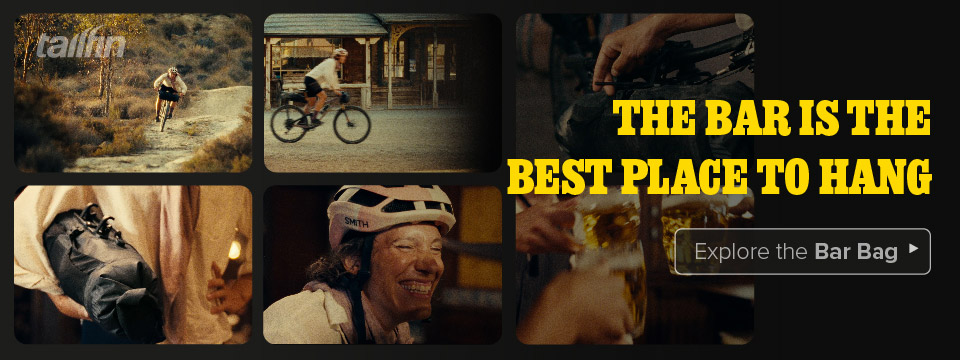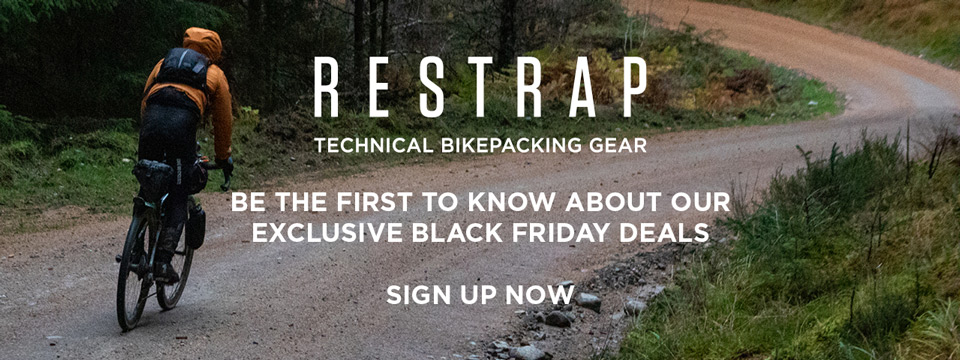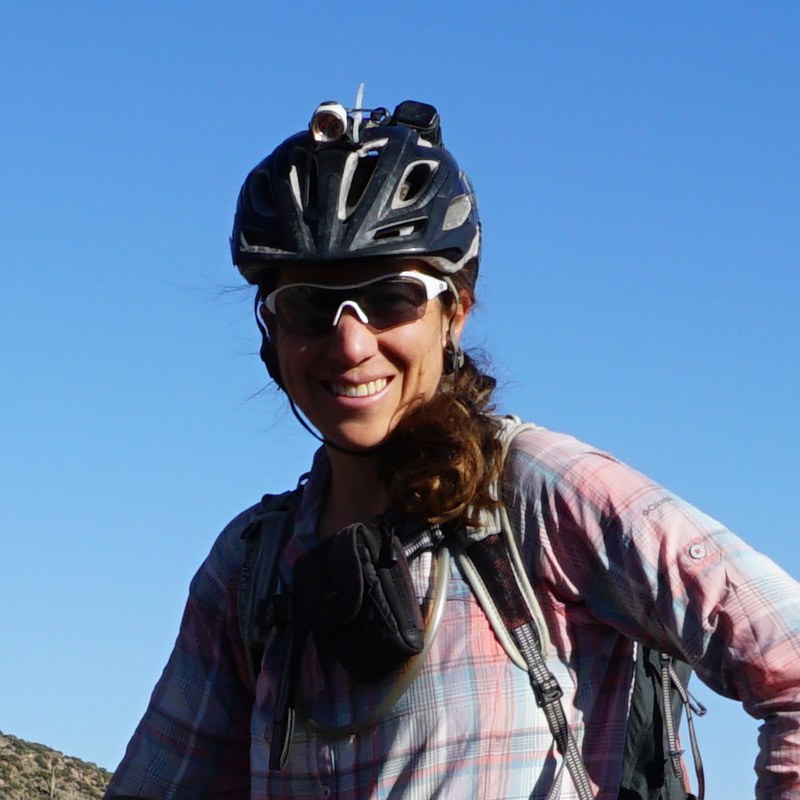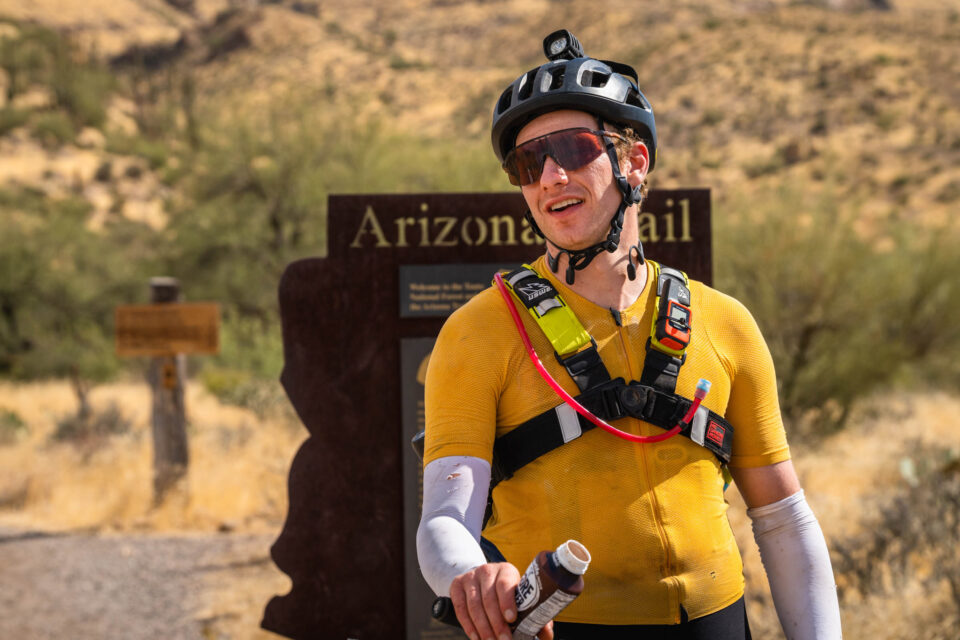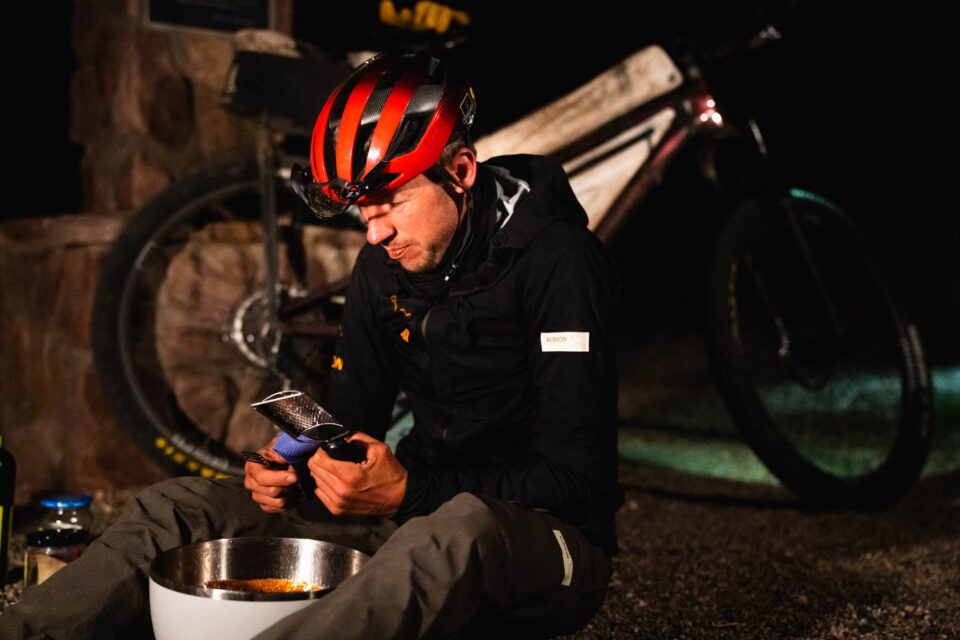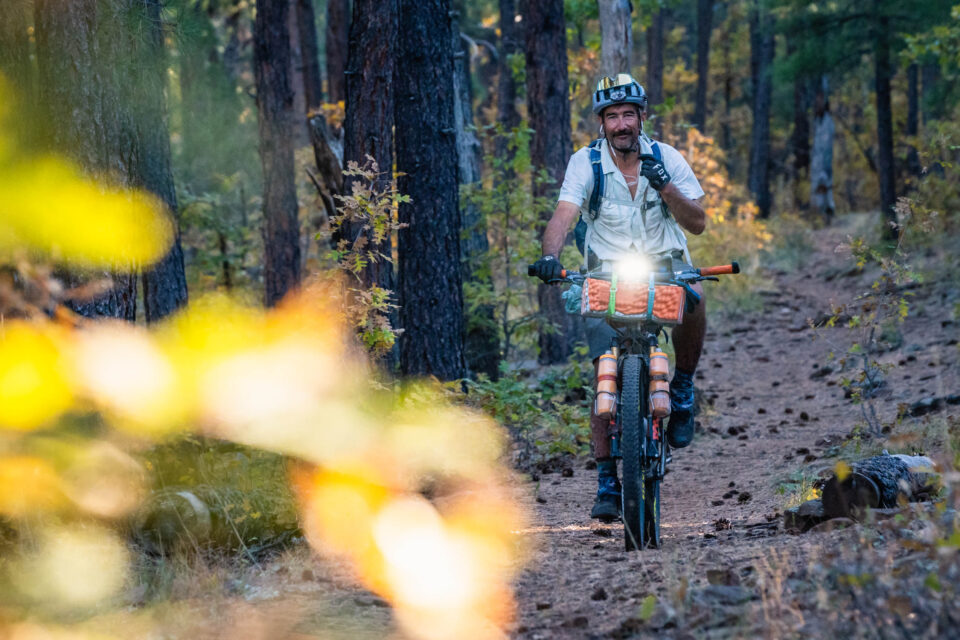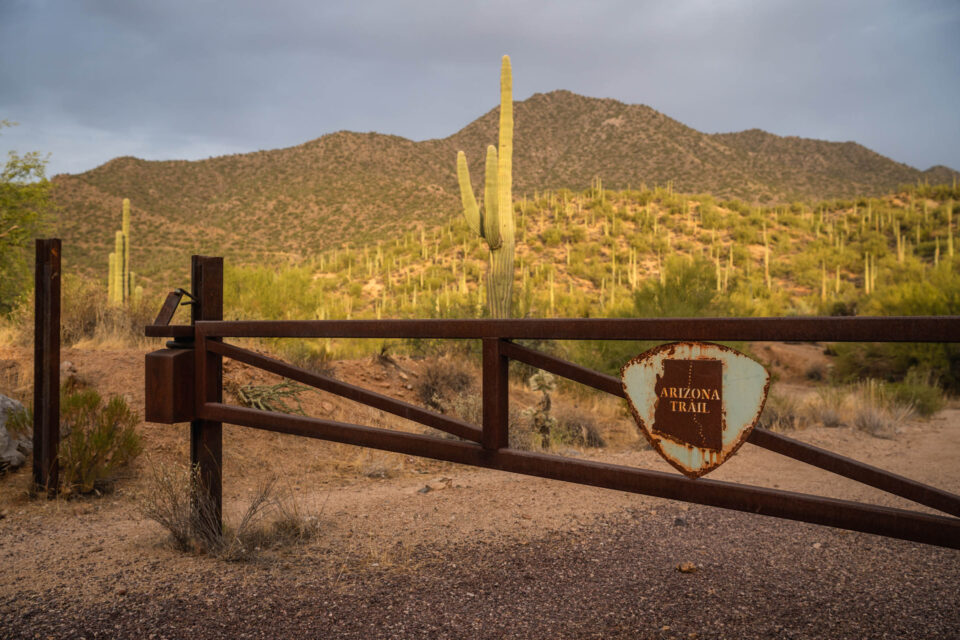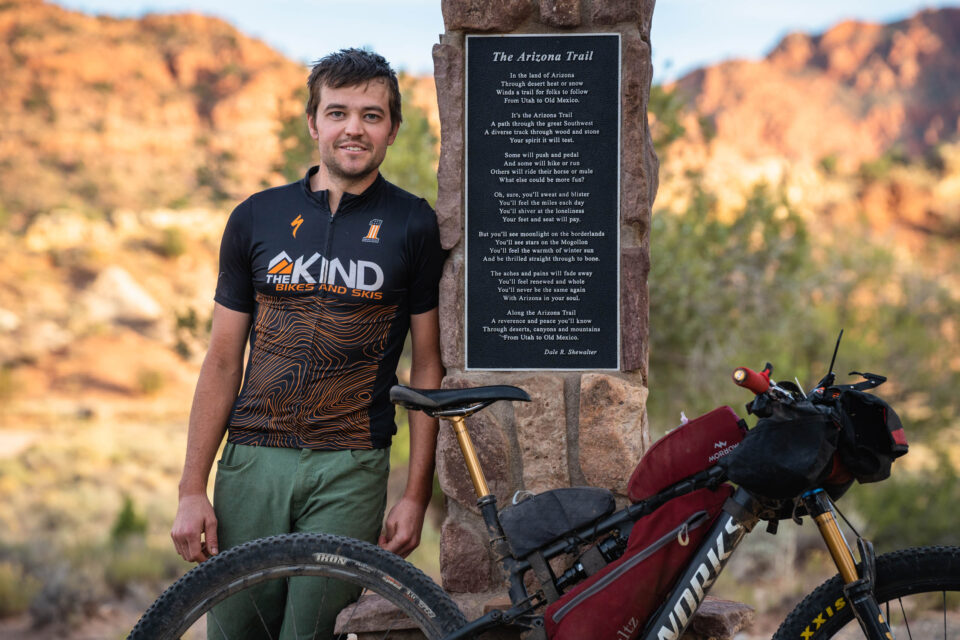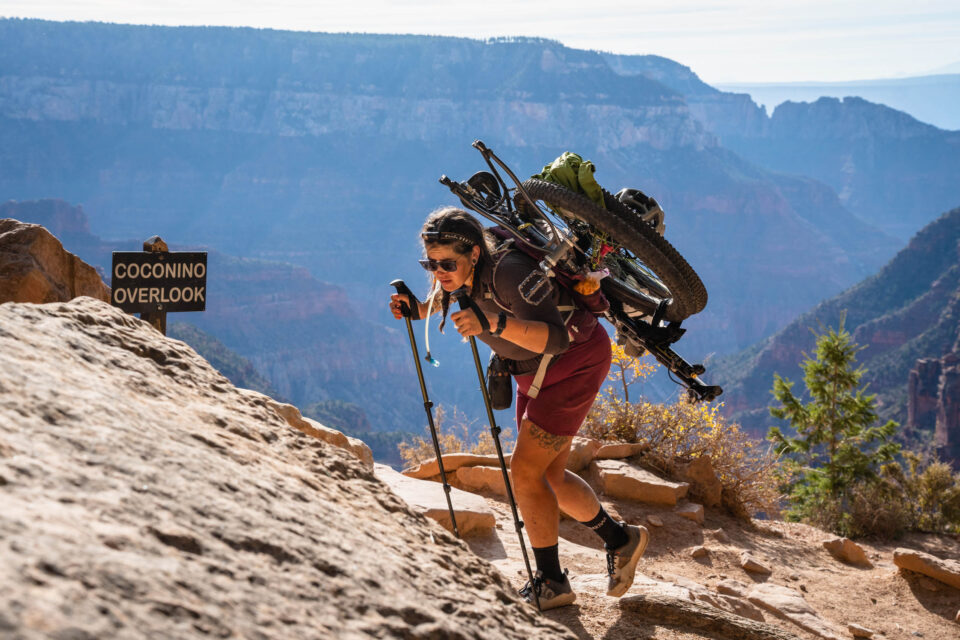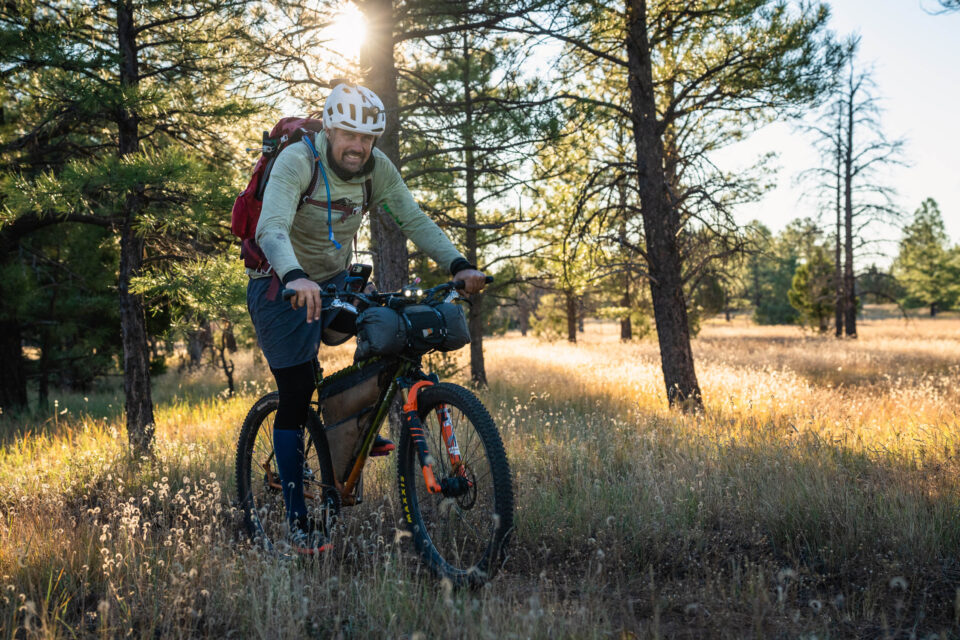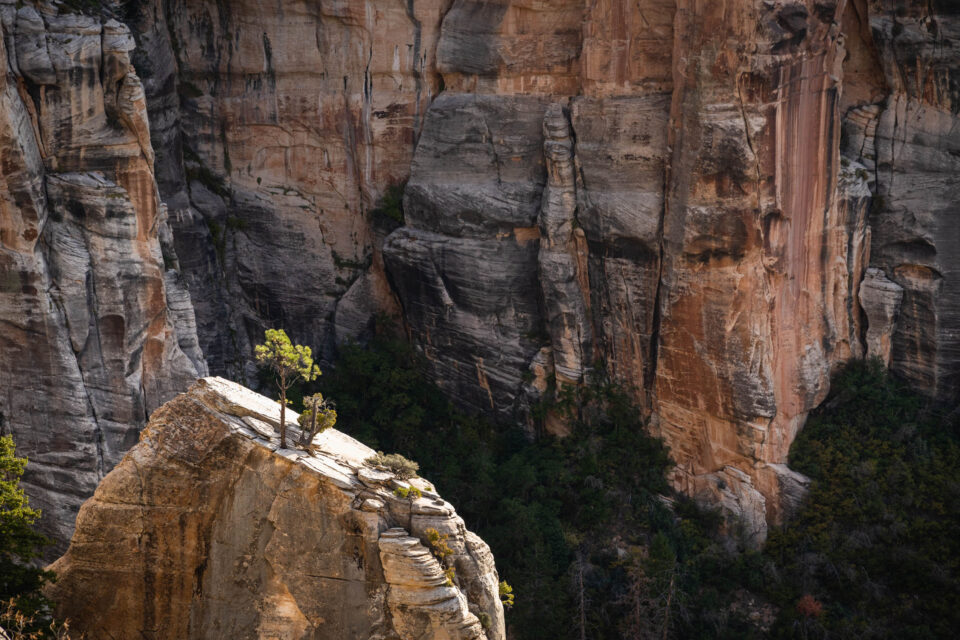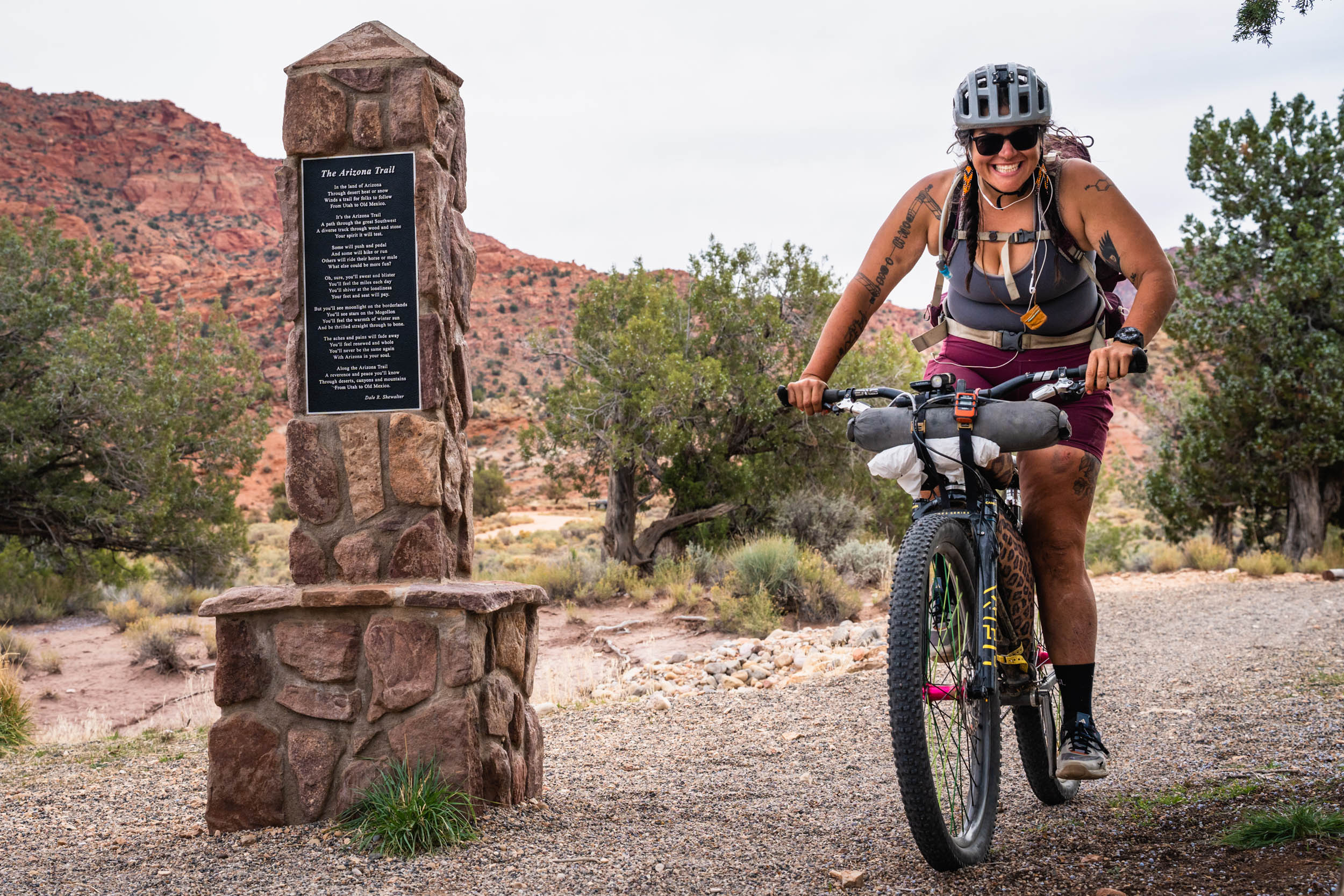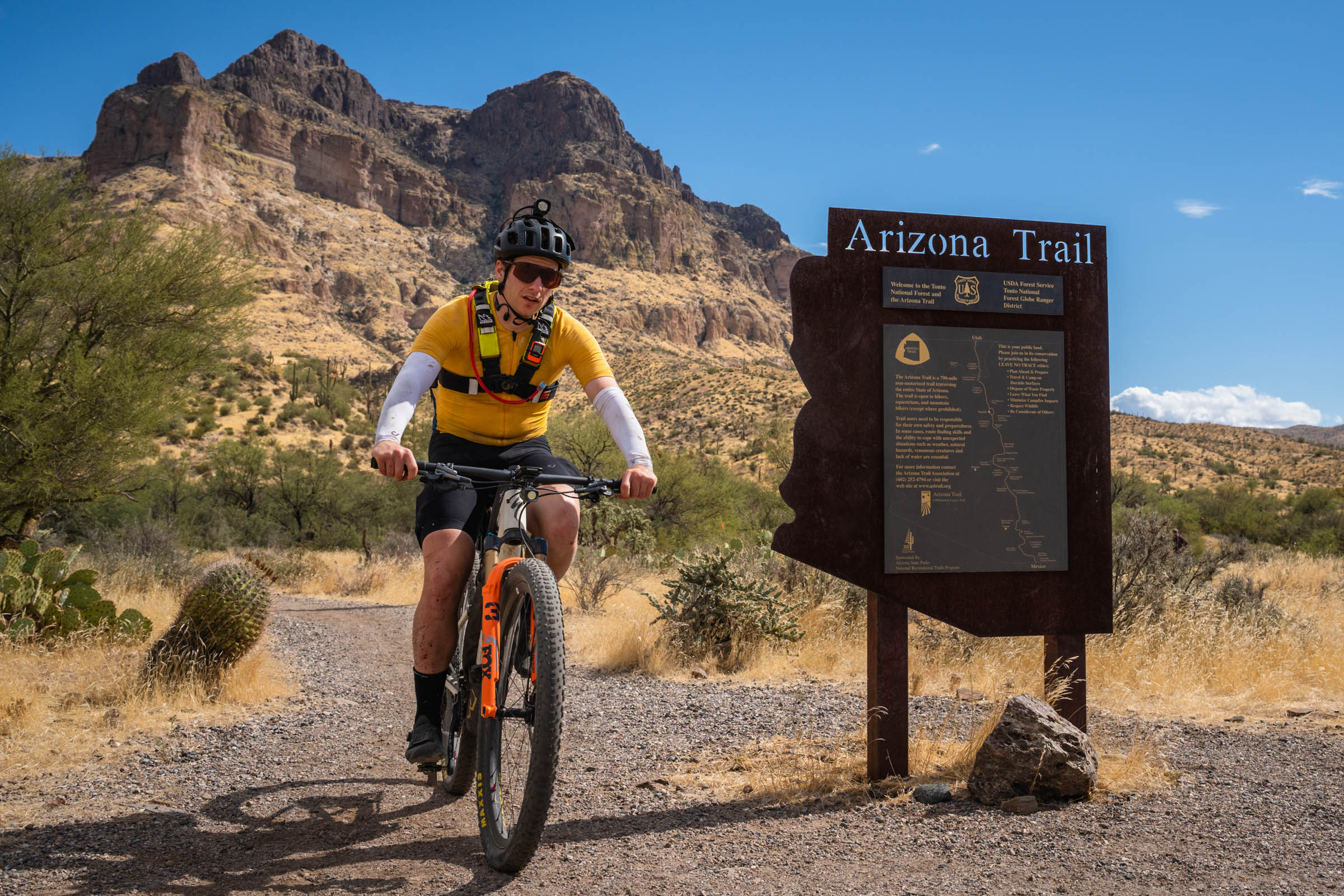A Winding String of Energy: 2024 Arizona Trail Race Wrap Up
In her final piece wrapping up coverage of the 2024 Arizona Trail Race, Eszter Horanyi recounts her personal experience documenting the race and how the unplanned chaos of it mirrors what the riders go through. Find her thoughtful reflection with a final brilliant gallery of photos from all corners of the trail here…
PUBLISHED Oct 30, 2024

It’s rare as a writer and photographer to be given full editorial freedom to tell whatever stories I want to tell about an event. But, aside from wanting finish line photos of the winners of each of the events, that’s exactly what BIKEPACKING.com gave me for covering the Arizona Trail 300 and 800. Write some daily notes, take some photos, and put together some Dispatches, they told me.
The beauty of this lack of direction is that I got to stand back and see what stories would emerge. The one thing I knew for sure was that the stories I would end up chasing and telling definitely wouldn’t be the ones that I was expecting. Because while we might want a race—or life—to follow a script that we’re comfortable with and can plan for, it never actually pans out how we planned. Trying to cover this race ends up having many parallels with racing it in the sense that flexibility is key. There will always be circumstances that require you to pivot on a dime and come up with a new plan to keep moving forward, and you can’t have any expectations beyond that everything will work itself out one way or another.
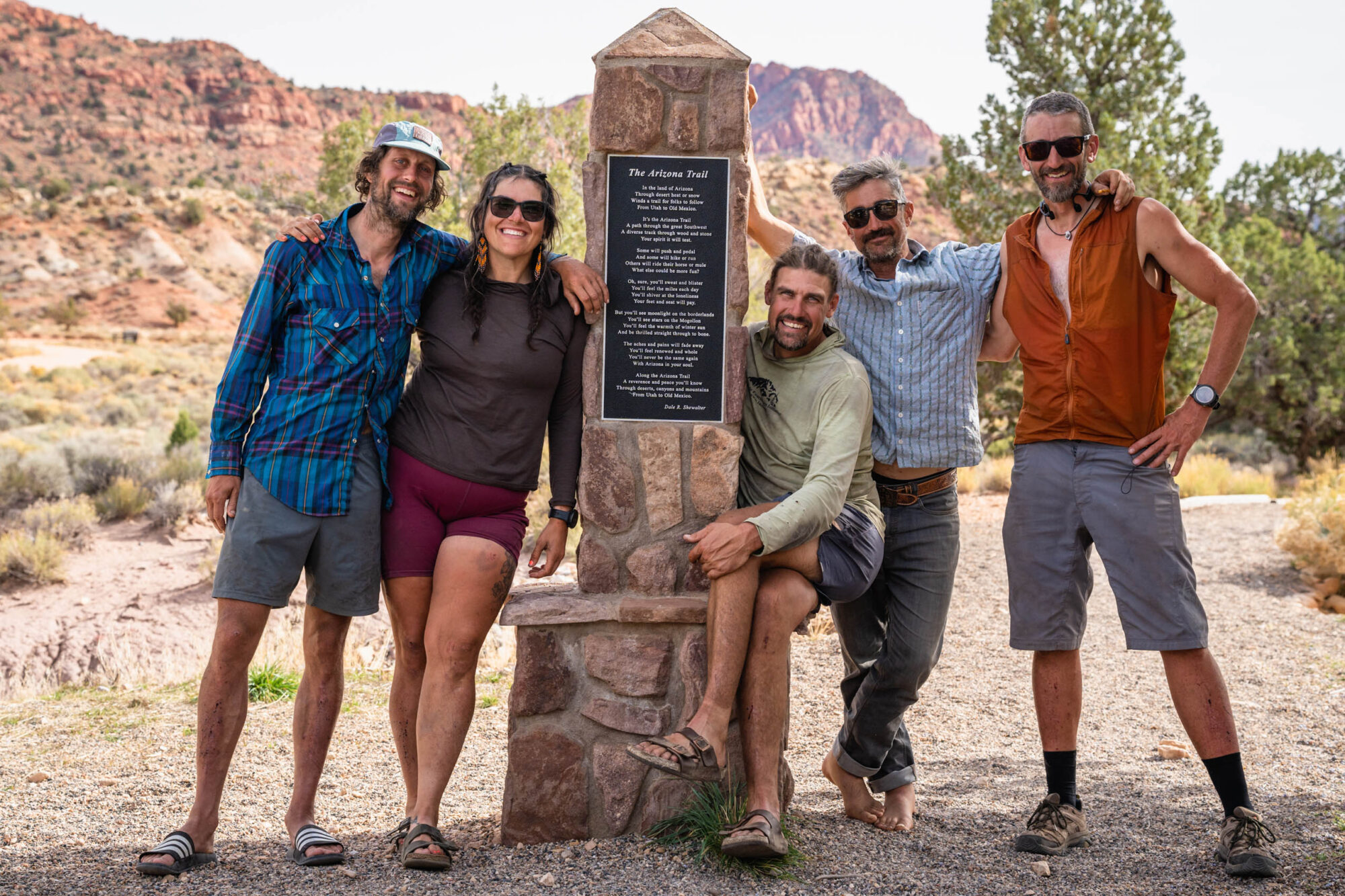
Being out on course gave me a front-row seat to the microcosm that is the Arizona Trail 300 and 800. And while I only caught glimpses, as I had a fairly firm rule of only seeing any one rider every other day and only engaging with them if they stopped and wanted to talk, I was continually amazed at the seemingly endless little experiences they were having out there that they were willing to share with me.
A lifetime in each day, every day. Over and over until they got to either Picketpost or to Stateline Campground.
It’s these experiences, which are at once unique to each individual and universal in their themes, that seem to bind the riders together, a string of energy stretched along the trail. All of them are alone in their thoughts and their rides yet connected by a common goal and love for the trail.
I suspect it’s this connection they all seem to share that makes the Arizona Trail 300 and 800 what it is.
It’s the singlespeed crew of Alexandera Houchin, Johnny Price, Justin Dubois, Max Keegan, and Matt Annabel strongly advising eventual AZT 300 winner, Jake Inger, before the start that he really should take a warm jacket and a frame bag. At the finish, a wide-eyed Inger, a bikepacking race rookie, mentioned several times that he was glad that he’d listened. There’s a mentorship in this group, a passing on of values, know-how, and tricks that can only be learned from messing up real bad.

There’s Justin Dubois, far from a bikepacking rookie, running out of water for 17 hours south of Flagstaff. I saw him pass by Double Springs Campground at the start of his 17-hour stint and ride right over a flowing creek that Max Keegan had stopped at and filtered water from for nearly half an hour. I thought maybe Dubois knew of a spigot so he didn’t have to filter. He didn’t. He was thirsty for a long time and still without water when I watched him pass right in front of me on the road the following morning, missing the chance to grab a photo by 45 seconds. I grumbled at my poor decision-making, not realizing that Justin was probably grumbling far more at his poor decision-making at the time. A couple of hours later, he refused to pay the $25 to get into Walnut Canyon National Monument to use their spigot and stayed thirsty for a few more miles into Flagstaff proper.
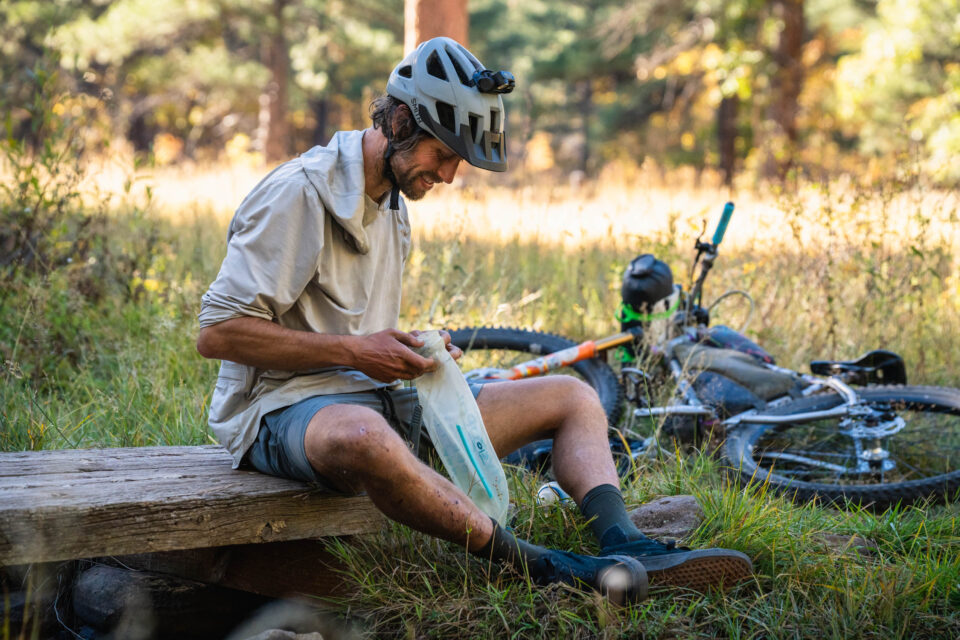
For 800 riders, it’s become commonplace to ship warmer sleeping gear and a bigger pack for carrying their bikes across the Grand Canyon somewhere to the northern half of the state. The consensus this year was that Payson was the right call both for timing and its location. Every single rider who shipped there seemingly had themselves a mini-epic retrieving their packages—from having to go off-route to make the post office hours, to missing the post office hour completely, to waiting in an absurdly long line, to forgetting to tell the clerk that their package was general delivery and watching said clerk disappear into the back while they could see their box right behind the counter.
There was Alex Schultz needing a complete reset in Payson after setting a blistering pace across the southern portion of the state, stopping early and sleeping for three hours before even bothering to get groceries. His wrists were so battered from the early miles that they swelled up grotesquely, and you could feel the tendons creaking as he flexed his wrist back and forth. “It doesn’t bother me too much when I ride,” he told me.
Abe Kaufman rolled into Picketpost looking like a broken man. Jake, who spent the 24 hours after his finish welcoming riders, sat and talked with him for the better part of an hour. Abe had been dealing with an array of injuries leading up to the event and just wanted things to go right. He’d clearly been pondering where the line between pushing through discomfort and causing permanent damage was. Jake encouraged him to take a rest, continue on, get some food in his belly, and then make a decision about his fate. As an outside observer of the event, I do my best not to interfere—in providing encouragement, info on the trail ahead, or assessments of other riders—but the encouragement the riders gave each other was tremendous to see.
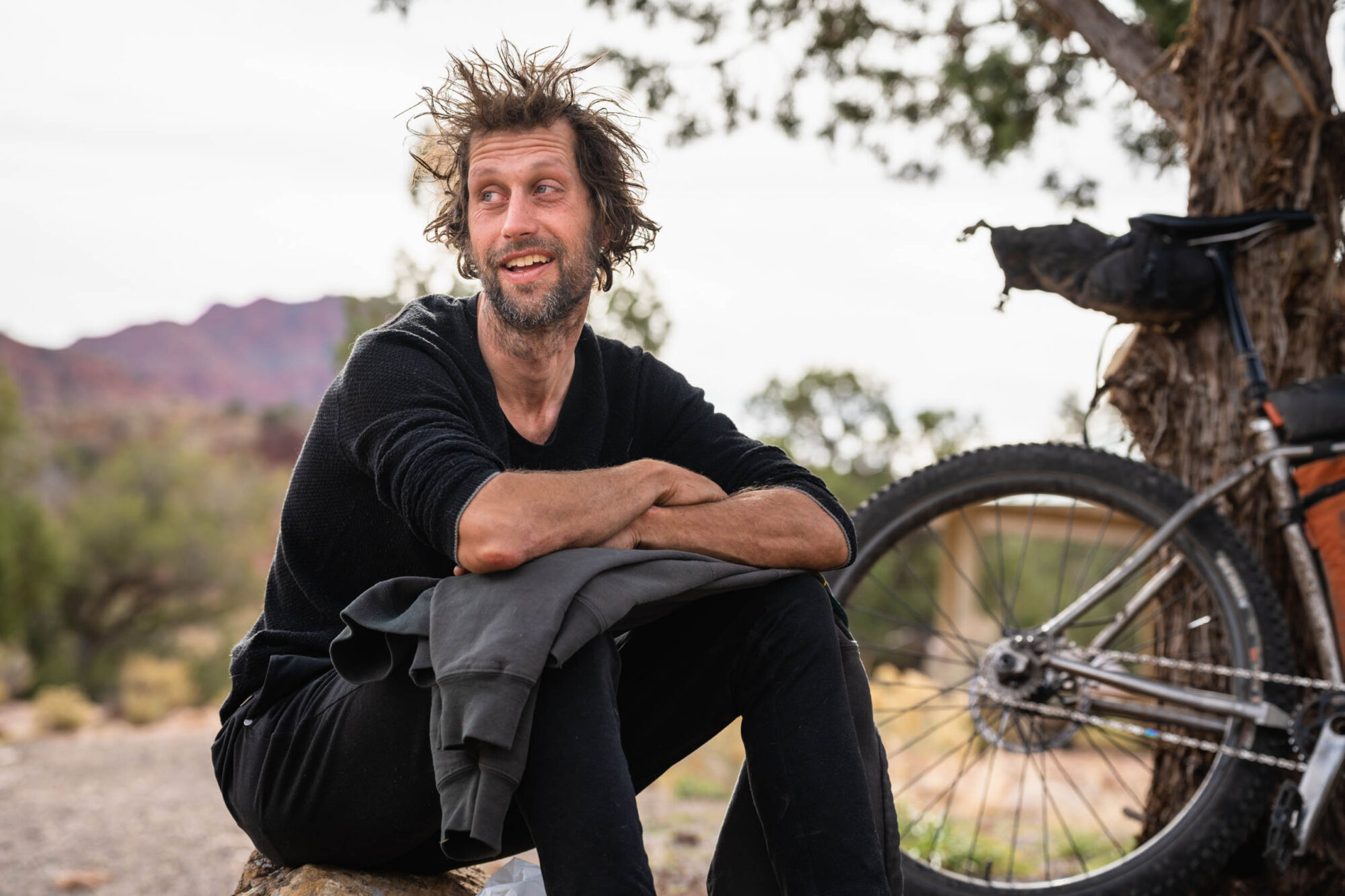
Max came to race the 800 after goading from Justin. The two had battled against each other in the Oregon Timber Trail race, and Justin had talked Max into racing the 800 instead of the 300, mostly because he wanted to race against him again. The two pushed each other from start to end, Justin lurking just behind until the Canyon crossing, thinking he could get a big gap by transitioning quickly and getting out of sight. But in recounting the ordeal, Justin is quick to laugh about the fact that Max actually transitioned more efficiently, and while he dropped below the rim after Justin, was still in sight just above him on the switchbacks when Justin made it down to the river. Justin spent the entire climb up to the North Rim in the dark, occasionally turning off his headlamp and looking back behind him to see if he could see Max coming. Justin’s moment of “take that!” was securing residence in the heated bathroom on the North Rim while Max settled for the long drop for a bit of warmth.

Matt Annabel was the ever-consistent shadow of the “friend-send train,” as he called it, often leapfrogging with Alexandera. Every time I saw him, I could sense his absolute joy and pride in getting to be part of this group at the front end of the race going so fast. He loved the fact that there were so many strong singlespeeders lined up, and especially strong singlespeed women. He expressed his love for a sport that took in all the misfits in life and brought them together to do amazing things together.

And then there’s Alexandera and Johnny. The pair met while racing the event four years ago and fell madly in love. They’ve navigated being life partners and competitors deftly and gracefully over the years, pushing each other to be the best versions of themselves, supporting each other in their goals, and coming up with increasingly audacious ideas. While they spent nearly all of the race riding separately, they found themselves hiking the Canyon together. While climbing up to the North Rim, a hiker made a comment about Alexandera being a woman, to which she replied, “Girls can have dumb ideas too!” These two seem to have such a deep bond with each other, with the trail, the landscape, the community that they’ve had such a large part in creating, that it feels like an honor to see them riding it. And then to have a good laugh when Alexandera firmly dropped Johnny on the final descent to the finish after having ridden the final 70 miles together.

I wish I could have spent more time with the other riders. I was there to photograph Karin Pocock during her first bikepacking race, the Colorado Trail Race in 2021. She still has wild eyes and endless stoke, and I was gutted that life forced me to leave Stateline before she finished. But during her stop in Mormon Lake, I saw her absolutely inhale calories and her unbridled excitement at there being a microwave to heat up two frozen mini pizzas. I also watched as two Arizona Trail thru-hikers looked on in amazement at her bike and kit, this woman with so much energy and enthusiasm.

And one couldn’t tell the story of the AZT 300 and 800 without mentioning race director John Schilling. His love for the trail and the race is unparalleled, from the actual, sometimes thankless, job of putting on the event to organizing rides on the weekends leading up to the race to trim catclaw and work on the trail. Living somewhat near the finish of the 300, he spent his weekend at the trailhead cheering on riders either as they finished their race or continued on. I suspect that we will never fully understand the impact that John has had on the trail or the lives of the people who ride and race it.
The inherent physics of not being able to be everywhere all at once means that I only got peeks into the lives being lived on the AZT and that I didn’t get to see and/or interact with everyone. There’s something to say about respecting riders’ solitude out there. There’s a beauty to only getting little snapshots into the experiences of the riders and trying to convey the spirit of the event, the spirit of the riders, in a set of images and words.
While there were the obvious storylines—Justinas Leveika riding incredibly fast (check out his winner Dispatch for more of his stories!), Alex Schultz not only going faster than his old men’s FKT but also the current overall one only to get beaten by Justinas on a course that required a detour that made all talk of FKTs null and void, Alexandera winning the women’s race to both Picketpost and Stateline—it’s really the little stories that make this race what it is.
For more than a week, I got to chase people around who were bringing their best selves to the table—mile after mile—across the incredibly diverse landscape of Arizona. And every interaction I had with a rider reinforced the sentiment that John Schilling had at Picketpost, “People are still signing up to do hard things.”

And it feels like as long as we are still willing to do that, we’re all going to be okay.
If the Arizona Trail 300 and 800 are just metaphors for the rest of life, it’s heartening to see that people will step up and out of their comfort zones to reach their goals, and all the while, be part of something bigger than can’t quite really be explained in words and photos.
Thanks to everyone who followed along.
Further Reading
Make sure to dig into these related articles for more info...
Please keep the conversation civil, constructive, and inclusive, or your comment will be removed.








